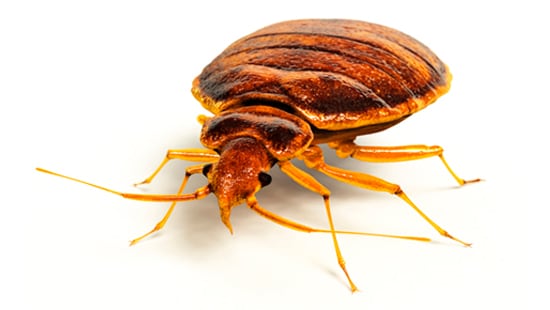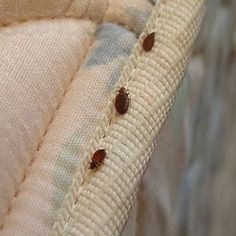Experienced Arlington Exterminator for All Your Pest Problems
Check Out the Various Types of Parasite and Their Treatment Choices for Effective Administration
The administration of pests in both property and farming settings demands a thorough understanding of the various types that can get into these settings, along with the therapy alternatives offered for reliable control. From home rats that present health risks to garden insects that threaten crop returns, each group demands a tailored method. Understanding the nuances of insect behavior and the corresponding treatments is crucial; however, the inquiry stays: what are one of the most effective methods that not just address existing problems but likewise protect against future incidents?

Typical Home Vermin
Although family pests can vary significantly in type and actions, many share common features that make them an annoyance. Typical home pests consist of rats such as rats and computer mice, insects like cockroaches and ants, and occasional intruders such as crawlers and flies. These bugs often prosper in settings that offer very easy access to sanctuary, food, and water, making homes particularly susceptible.
Rats, for instance, are well-known for creating architectural damage and spreading condition. Pests like cockroaches are not only troubling yet can likewise set off allergic reactions and bronchial asthma in delicate individuals.
Effective pest administration starts with prevention, which includes securing entrance points, keeping cleanliness, and making use of suitable storage methods for food. Monitoring for indicators of problem is essential, as early discovery can stop a lot more considerable issues. When problems take place, different control approaches exist, varying from catches and lures to expert elimination solutions. Comprehending the behaviors and attributes of these usual home pests is vital for effective management and maintaining a healthy living atmosphere.
Yard Insects and Their Effect
Yard bugs position a significant hazard to the health and efficiency of plants, with some estimates recommending that they can trigger up to 40% of plant losses in certain regions. These insects, that include pests such as caterpillars, beetles, and aphids, as well as nematodes, can bring upon severe damages by eating plant tissues, causing stunted development, minimized yields, and compromised high quality.
The influence of garden bugs extends beyond plain visual concerns; they can disrupt ecosystems by modifying food cycle, affecting pollinators, and spreading conditions among plants. Insects like the spider mite can compromise plants, making them much more prone to fungal infections. Moreover, invasive species might outcompete native flora, resulting in biodiversity loss.
Efficient management strategies are important to minimize these hazards. Integrated Insect Monitoring (IPM) practices, which combine organic control, social practices, and targeted chemical applications, can give lasting options. Regular monitoring and very early treatment are vital in preventing problems. bed bug heat treatment. By understanding the details pests and their habits, garden enthusiasts can execute targeted treatments that not just protect their plants but additionally advertise a healthier yard ecological community.
Rats: Recognition and Dangers
Rats are usual garden insects that can present significant threats to plant health and general ecosystem security. These little mammals, including types such as rats, mice, and voles, are typically identified by their sharp incisor teeth and robust bodies. Their fur coloration varies widely, varying from gray to brown, and they usually display a long tail which help in balance and agility.
The dangers linked with rodent invasions are complex. Rodents are notorious for their duty as vectors of various diseases, consisting of hantavirus and leptospirosis, which can be transferred to human beings and family pets.
Additionally, rats can interfere with the all-natural balance of regional environments by competing with native wild animals for sources. Their burrowing practices can bring about dirt erosion and destabilization of plant origins. Very early identification and understanding pest control bats of rodent actions and dangers are critical for efficient insect management.
Efficient Treatment Methods
When managing rodent infestations, employing efficient therapy methods is necessary for decreasing damage and health and wellness risks. Break traps and digital catches offer a humane and fast way to remove rats, while adhesive catches can help monitor task levels.
Secondly, bait stations having rodenticides can be strategically placed in areas of high rodent activity. These stations should be tamper-resistant to make sure the security of non-target animals and youngsters. It is vital to select the ideal lure kind, as rodents can develop bait hostility if not changed periodically.
Along with traps and eliminating rats lure, securing access factors can substantially minimize the chances of re-infestation. This entails checking and fixing gaps in windows, doors, and wall surfaces.
Lastly, specialist pest control services can be useful for considerable invasions. They have the know-how, devices, and products needed for efficient removal and can establish a tailored administration plan. By carrying out these treatment approaches, building owners can efficiently address rodent issues and shield their health and residential or commercial property.
Preventative Actions and Tips

Maintaining sanitation is equally important; make sure that food is saved in impermeable containers and immediately tidy up crumbs or spills. Consistently disposing of rubbish and making certain that compost heap are handled effectively can deter insects from being attracted to your home.
Furthermore, think about landscaping methods that inhibit rodent habitation. Trim greenery and maintain mulch far from the foundation of your building, as these can pet friendly pest control supply hiding spots for parasites.
Verdict
Efficient bug monitoring demands a comprehensive understanding of various pest types and their certain treatment options. Tailored approaches for household bugs, yard insects, and occasional invaders are necessary for boosting and minimizing risks control steps. By integrating efficient treatment approaches with preventative approaches, such as regular inspections and preserving sanitation, the probability of problems can be dramatically lowered. Ultimately, a proactive position on insect management cultivates a healthier setting, securing both household and farming rooms from pest-related difficulties.
Usual house insects consist of rats such as mice and rats, pests like cockroaches and ants, and occasional invaders such as spiders and flies.Rats are typical garden insects that can posture significant risks to plant health and wellness and total ecological community security. Very early recognition and understanding of rodent habits and risks are crucial for efficient bug administration.
Effective insect administration starts long before an infestation happens, with positive procedures that can substantially minimize the probability of rodent entrance and habitation.Reliable parasite administration demands a detailed understanding of numerous insect types and their details treatment choices.